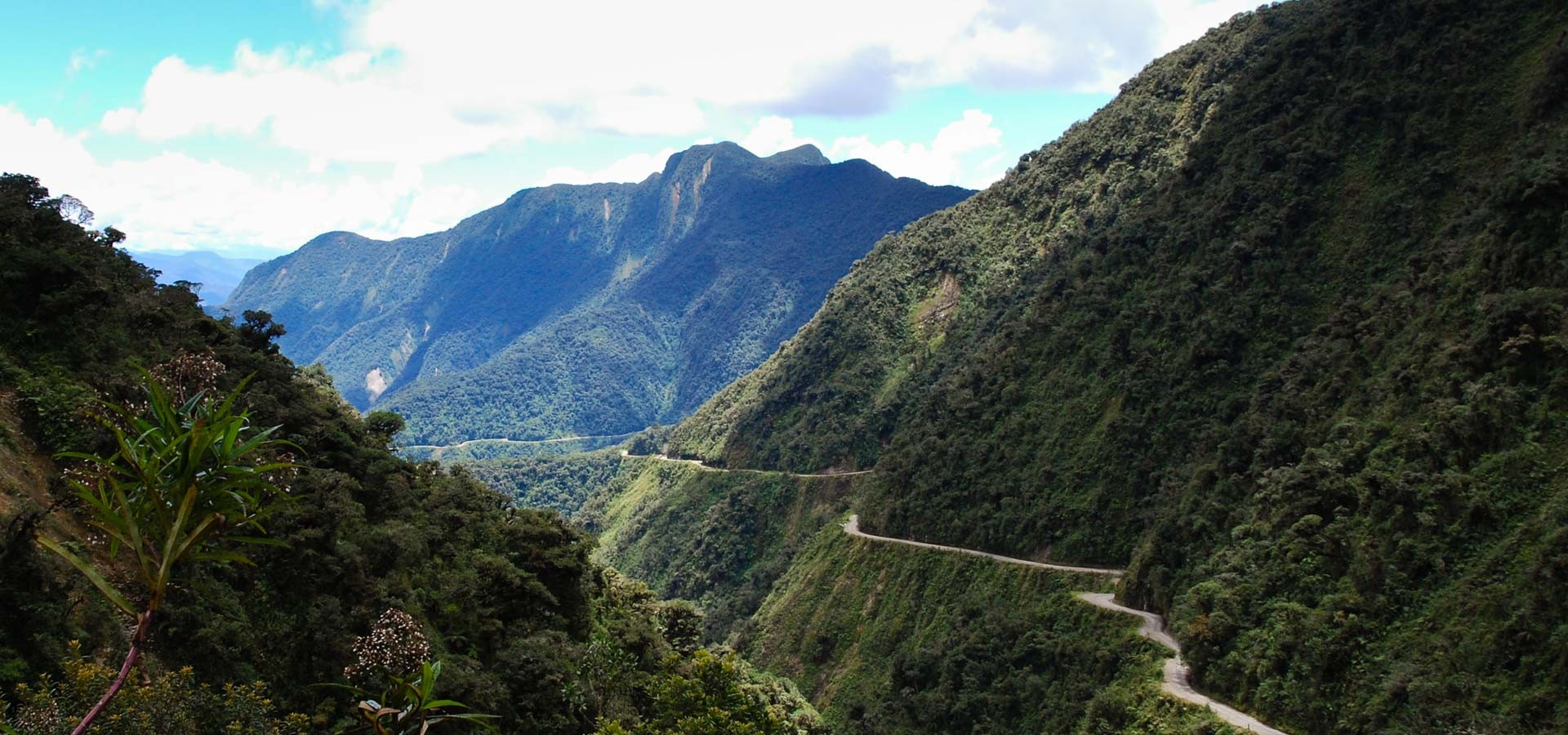The World’s Most Dangerous Road!
The name “La Carratera de la Muerte” or “Death Road” is not an invention of sensational journalism but was given to the road which starts in La Paz, descending 3.450 meters down into the Yungas, within only 64 kilometers in 1995 by the Inter American Development Bank. Every year, about 300 people have died on this short stretch. In one year about 25 vehicles fell off the road, making it one every two weeks.
Why is this road so dangerous? First of all, at some parts of the, if you want to call it a road, are so narrow that it seems hardly a car can pass, about 3 meters wide. High rock walls go up on one side, whereas on the valley side the cliffs go down hundreds of meters. Irresponsible driving, alcohol and the conditions of the vehicles are others. During the dry season the road is a ribbon of dust with clouds of sand engulfing the vehicles and bringing visibility down to zero. Fog is quite common in this area and during the rainy season cascades of water rush down the mountain turning the surface into a slippery, slimy mass. Now this notorious 64 kilometer road was not a path that connects a couple of villages, but was the main and ONLY link from La Paz to the fertile Yungas region with its coffee and coca plantation, and then further into Bolivia’s Amazon Basin and at last into Brazil. It was heavily frequented by trucks, buses and all kinds of vehicles…
Accidents were so common that special driving rules were introduced for this road: vehicles going up had to drive on the mountain side of the road, forcing trucks going downhill to slow down and allowing their drivers to be able see more accurately how far the outer wheels were from the cliff’s edge, especially when passing each other. Hence, this road was the only one in America where people drove on the left. People from La Paz and Coroico told us how horrifying that trip was and that drivers would have all kind of rituals before starting out hoping for a safe trip, like praying or bringing offerings. The side of the road is full of crosses or plagues remembering those travelers whose prayers went unheard.
Talks about building a new road started 20 years ago, but only in December 2006 was this one opened. So all this is history now, since most cars take the new road and “Death Road” has been given a new purpose – it has become a Mecca of mountain biking in Bolivia, something we could not miss.
This trip down the mountain was one of the most memorable experiences of our trip so far. What promised to be a scenic ride with a bit of adrenaline exceeded all our expectations! It was one of the most wonderful experiences for both of us, using only gravity to descend from 4.640 meters to 1.295 meters, within only 64 kilometers.
When you start out at freezing La Cumbre, an hour from La Paz, the landscape is the typical barren Altiplano scenery with snow-capped mountains, 6.000 meters or higher, lurking from behind smaller mountains. We were lucky since it was not raining or snowing, which is often the case there. The first 30 km is a paved road with the steep slopes of the Altiplano gliding by.
After 30 kilometers we reached the part where the new road begins and the old road branches off following the mountain slope with the Coroico River deep below, like a silver band. Here the dirt road began, we were not immediately aware that this was already THE road, because it seemed more of a gravel path than anything else. It was only then that the expression “Death Road” did not seem all that…
The landscape and the temperature changed quickly and the view became simply breathtaking. The green steep slopes of the Yungas region are full of lush vegetation and it became hard to concentrate on the road. The closer we came to Coroico the more beautiful the landscape became, which made us decide to stay here for a couple of days…
More information about traveling to Bolivia

